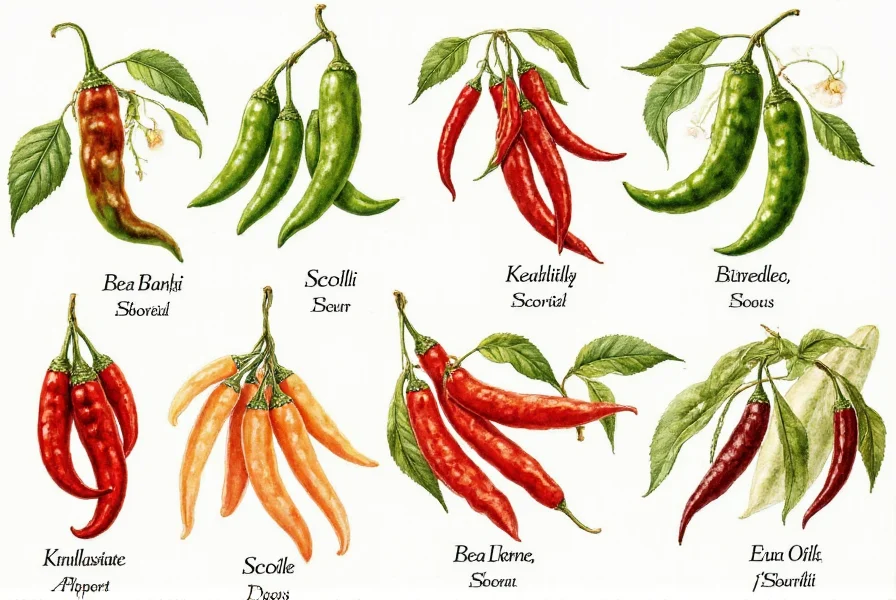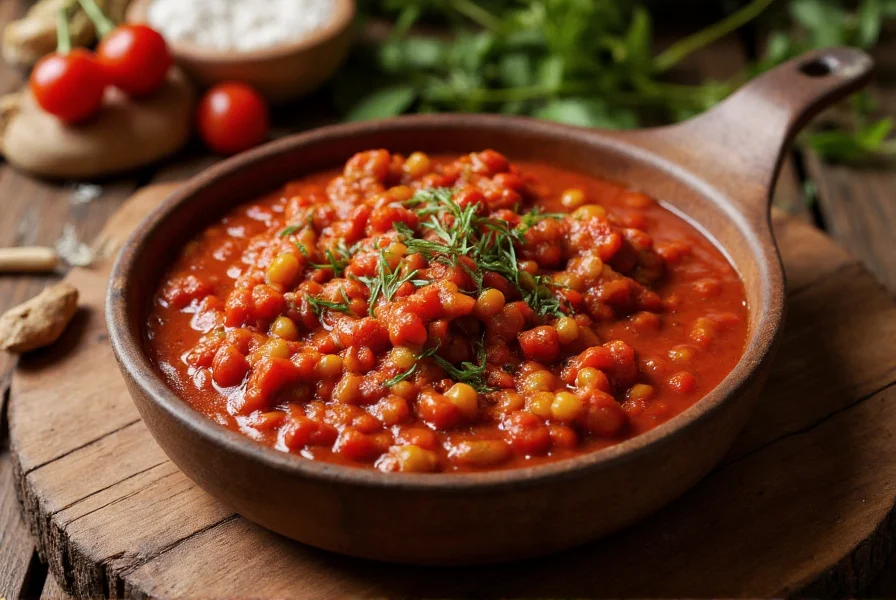"Wiki chili" is not a recognized term or established platform. Users searching for this phrase typically seek information about chili peppers, which can be found in Wikipedia's comprehensive articles on Capsicum species, chili varieties, and global culinary uses. The confusion often stems from misphrasing "Wikipedia chili" or misunderstanding "wiki" (Hawaiian for 'quick') in relation to chili content.
When exploring information about chili peppers online, it's essential to understand the distinction between reliable botanical resources and common search misconceptions. Many users mistakenly combine "wiki" with "chili" expecting a dedicated platform, when in reality, Wikipedia hosts extensive, scientifically-vetted content about chili peppers under appropriate botanical and culinary categories.
Understanding Chili Peppers: Beyond the Search Confusion
The term "chili" refers to various cultivars of Capsicum plants, renowned for their pungency and culinary versatility. These fiery fruits have shaped global cuisines for millennia, with archaeological evidence tracing their domestication to Mesoamerica approximately 6,000 years ago. Modern chili varieties span an extraordinary spectrum—from the mild bell pepper (Capsicum annuum) to the intensely hot Carolina Reaper (Capsicum chinense).

Wikipedia's Comprehensive Chili Coverage
Wikipedia provides authoritative information about chili peppers through multiple interconnected articles. The main Chili pepper entry serves as a central hub, detailing:
- Botanical classification and evolutionary history
- Chemical composition, particularly capsaicinoids responsible for heat
- Global cultivation practices across different climates
- Cultural significance in various world cuisines
- Measurement systems like the Scoville scale
These articles benefit from Wikipedia's collaborative editing process, where subject matter experts and enthusiasts maintain accuracy through citation of peer-reviewed research and authoritative sources. The platform's strict verifiability policy ensures that chili-related information remains grounded in scientific consensus rather than anecdotal claims.
| Chili Variety | Scoville Heat Units | Primary Growing Regions | Common Culinary Uses |
|---|---|---|---|
| Bell Pepper | 0 SHU | Worldwide | Fresh salads, stuffed dishes |
| Jalapeño | 2,500–8,000 SHU | Mexico, USA | Salsas, pickled preparations |
| Habanero | 100,000–350,000 SHU | Caribbean, Yucatán | Hot sauces, Caribbean cuisine |
| Carolina Reaper | 1,400,000–2,200,000 SHU | USA (South Carolina) | Extreme heat challenges, specialty sauces |
Scientific Classification and Botanical Facts
Chili peppers belong to the nightshade family (Solanaceae), with five domesticated species forming the foundation of global chili production. The most commercially significant species is Capsicum annuum, encompassing familiar varieties like jalapeños, serranos, and cayenne peppers. Each species has evolved unique adaptations to environmental conditions, resulting in diverse fruit morphology and capsaicin production.
Recent genetic studies have revealed fascinating insights into chili evolution. Researchers at New Mexico State University's Chile Pepper Institute discovered that capsaicin production serves as a natural defense mechanism against fungal pathogens in wild chili populations. This evolutionary adaptation explains why domesticated varieties often show reduced heat levels compared to their wild ancestors.
Global Culinary Impact and Cultural Significance
The Columbian Exchange transformed global cuisine by introducing chili peppers to Asia and Africa, where they rapidly integrated into local food traditions. In India, chilies became essential to curry preparations within decades of their introduction. Thai cuisine developed complex chili-based dishes that balance heat with sweet, sour, and salty elements. Hungarian paprika production evolved into a protected geographical indication, with specific growing regions producing distinct flavor profiles.
Understanding regional chili preferences provides valuable insight into cultural foodways. The Chinese province of Sichuan favors the distinctive numbing heat of花椒 (huājiāo) alongside traditional chilies, while Ethiopian cuisine incorporates berbere spice blends featuring bird's eye chilies. These adaptations demonstrate how chili peppers have become deeply embedded in cultural identities worldwide.
Evaluating Online Information About Chili Peppers
When researching chili peppers online, consider these verification strategies to ensure information accuracy:
- Check for citations to peer-reviewed botanical or agricultural research
- Verify author credentials, particularly for medical or nutritional claims
- Compare information across multiple authoritative sources
- Look for recent publication dates when discussing cultivation techniques
- Assess whether heat level claims reference standardized measurement systems
Reputable institutions like the Chile Pepper Institute, International Society for Horticultural Science, and agricultural extension services provide reliable information that surpasses many commercial websites focused on selling chili products. Their research-driven approach ensures factual accuracy about cultivation, varieties, and uses.
Common Misconceptions About Chili Peppers
Several persistent myths surround chili peppers that warrant clarification:
- Misconception: The seeds contain most of the heat.
Fact: Capsaicin concentrates in the placental tissue (white ribs), not the seeds. - Misconception: Milk permanently removes chili burn.
Fact: Dairy provides temporary relief by binding capsaicin, but doesn't neutralize it. - Misconception: All hot peppers belong to the same species.
Fact: Multiple Capsicum species produce hot varieties with different genetic profiles.
Understanding these distinctions helps enthusiasts make informed decisions about cultivation, culinary applications, and health considerations when working with chili peppers.
Practical Applications for Chili Enthusiasts
Whether you're a home gardener, chef, or food scientist, accurate chili information enables better decision-making. Consider these practical applications:
- Gardeners can select varieties appropriate for their climate and intended use
- Chefs can balance heat levels with other flavor components effectively
- Food manufacturers can ensure consistent product quality through proper sourcing
- Researchers can build upon established scientific knowledge for new discoveries
By accessing reliable information sources like Wikipedia's well-sourced articles and academic institutions' research publications, chili enthusiasts can deepen their understanding beyond superficial search results.
Frequently Asked Questions
What is the correct term for information about chili peppers on Wikipedia?
The correct terminology refers to 'chili pepper' or 'Capsicum' articles on Wikipedia. There is no dedicated 'wiki chili' platform. The primary article is titled 'Chili pepper' which covers botanical classification, history, and global usage.
Why do people search for 'wiki chili' when looking for chili information?
This search pattern typically results from misphrasing 'Wikipedia chili' or confusing 'wiki' (Hawaiian for 'quick') with the subject matter. Many users expect a dedicated chili wiki platform that doesn't exist, when Wikipedia's standard articles contain comprehensive, scientifically-reviewed information about chili peppers.
How can I verify the accuracy of online chili pepper information?
Check for citations to peer-reviewed research, verify author credentials, compare information across multiple authoritative sources like university extension services, and look for references to standardized measurement systems like the Scoville scale. Reputable institutions such as the Chile Pepper Institute provide reliable, research-based information.
What's the difference between various chili pepper species?
Five domesticated Capsicum species produce culinary peppers. Capsicum annuum includes common varieties like jalapeños and bell peppers. Capsicum chinense contains extremely hot varieties like habaneros. Capsicum frutescens includes tabasco peppers. Each species has distinct genetic profiles, growth habits, and capsaicin production characteristics.
Where can I find reliable information about growing chili peppers?
University agricultural extension services, the Chile Pepper Institute at New Mexico State University, and the International Society for Horticultural Science provide research-based growing information. Wikipedia's 'Chili pepper' article cites many of these authoritative sources and includes cultivation details verified through academic research.











 浙公网安备
33010002000092号
浙公网安备
33010002000092号 浙B2-20120091-4
浙B2-20120091-4